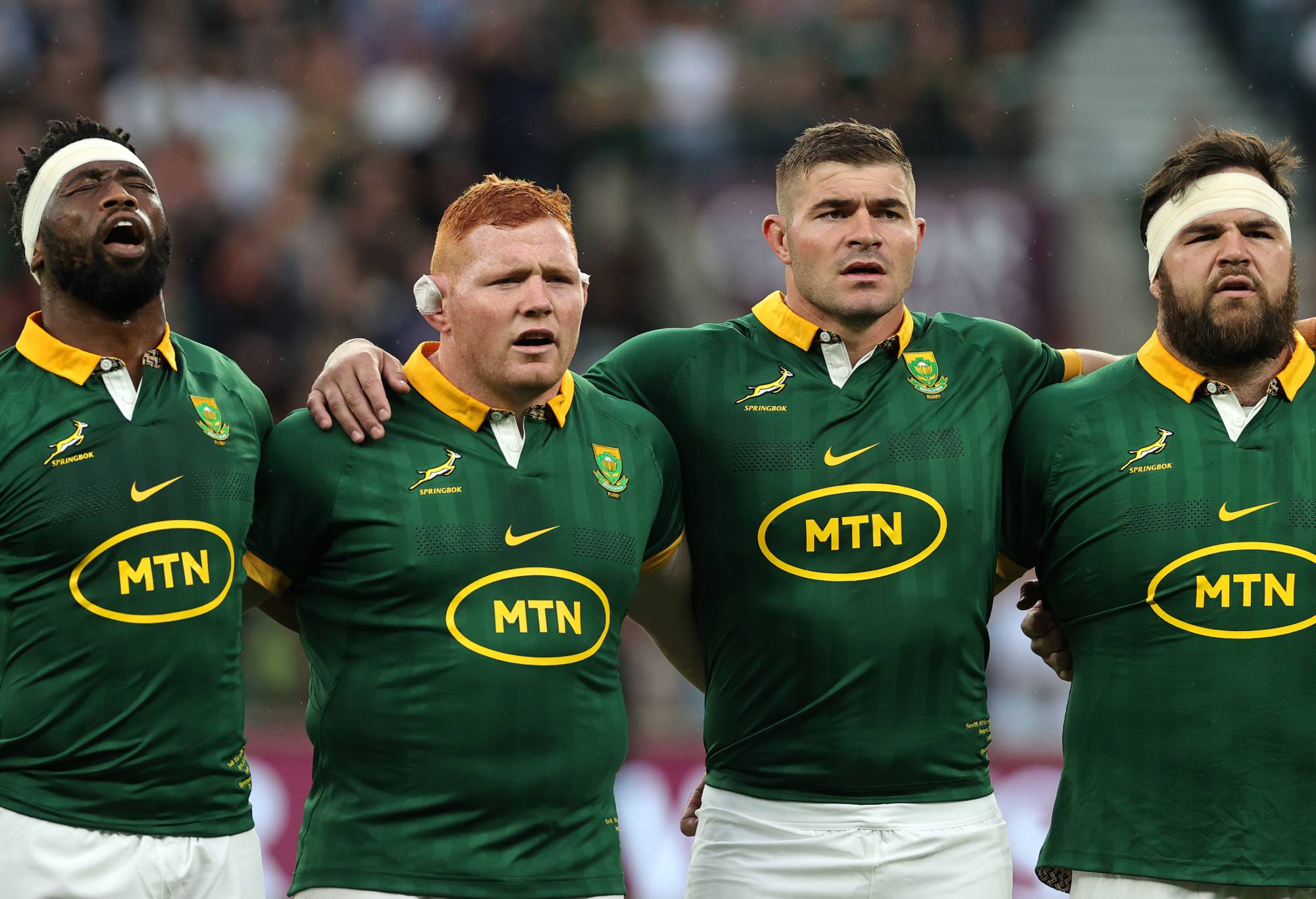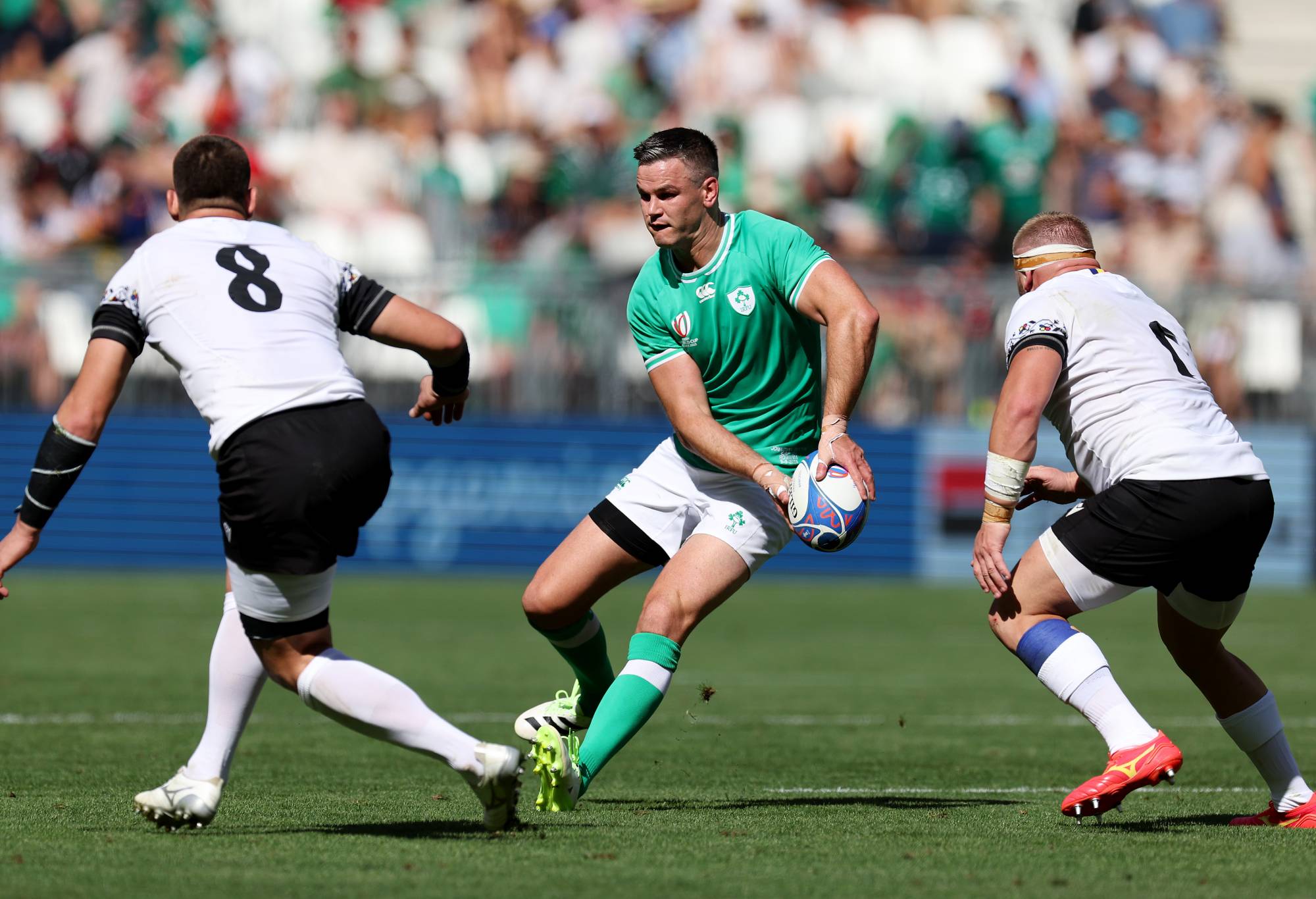If Pool C is the fun zone of peers, Pool B is a Cold War zone of proxy patsies served up to the hegemons.
An hour before the gates to Stade de la Beaujoire in Nantes opened, French commandos descended on the greens around the arena as if parachuted. A sea of Irish picnickers beheld them, bemused.
Teams of black clad anti-terrorism pods also patrolled the car park and tram line. They were the first security types who declined my selfie request: “Just my boots, please.” They were handsome shoes.
As social media guardians warned folks to get to the stadia early, the crush worsened, requiring equestrian cops and other branches of the services to get involved. We may need to get to the Stade de France in the morning for a nine o’clock match.
Pool B is serious. It was given the moniker ‘Pool of Death’ in contrast to the ‘Pool of Life’ (Pool C). Rugby is of course not life or death, but the most majestic and complicated of sports, with overtones of territory and battlements and salient raids.
Scotland was supposed to be the best they had ever been at the Cup but have only managed to score one lonesome penalty goal in the steam of Marseille. The scoring juggernaut of the Six Nations now lag Tonga by thirteen and Romania by five in points scored.
Toughened Tonga will get a chance to retain that margin this Sunday in Nice in weather far more reminiscent of Nuku’alofa air than Edinburgh’s cool winds.
Meanwhile, nobody has crossed the Springbok tryline, which means the last time a World Cup opponent touched down against the Boks was the opener in Japan in 2019.

(Photo by David Rogers/Getty Images)
If we think of South Africa as the benchmark for defence in world rugby since the Munster machine of Rassie Erasmus and Jacques Nienaber took the reins in 2018, the best attack is surely the lighter green team.
So far, Ireland has persisted with the style which put them top of the world: exiting with ball in hand more than by the boot, creating breaks by means of voluminous phases and variegated angles of attack choreographed by Johnny Sexton, and finding the resources for rucks by positioning their pack and (now preferred twelve) flank-centre Bundee Aki doing his best Botia impression, spread across the pitch rather than clumped in a pile.
The Irish style of long presentation after a half-second squeeze, the length of their clean, extending the ruck and thereby the channels to explore, and the height of their cleaners: all exemplary.
Referees seem to enjoy their style; neutral fans as well. No disgraces, bloody or unbloody, have been seen.
Wayne Barnes even gave returning doyen Sexton an extra two seconds to kick his first goal, a fact noted loudly by the crowd.
In the cozy stadium at Nantes, I wondered if the neutrals would side with underdog Tonga or their Six Nations rivals. The answer is: tries make people happy. Ireland is seen as the antidote to this kick-heavy, phase-sceptic tournament.
To be fair to the teams, France has been unseasonably, unreasonably sticky and hot for September, with several heat and humidity records set in cool old places like Lyon and Bordeaux.
Ireland is attempting the hardest feat in elite sport: go wire to wire, forget to lose for two years, be the hunted and not get caught, peak and stay at the peak.
But their opposition so far have been perfect fodder, outmanned in the case of Romania and in Tonga, playing into the hands of Andy Farrell’s accurate, patient squad.
The second big fight of the Cup looms. South Africa is bringing fifteen forwards to Paris to never relent in pressure on set piece and first phase, destroy a few Irish rucks, cut their 67.5 percent gainline success in half, stack lineouts with four leapers, and when the slow poison has entered the system, counter with their more evasive runners (the Boks have evaded almost thirty percent of tackles so far; an edge over Ireland even with their inferior opposition so far), and use their line break-finishers (56.3% of Bok breaks have ended in a try) to take the few chances precise Ireland gives up.
In their ‘warmup’ match against Romania, the Boks used a second team with four halfbacks and did not allow Romania a point, but still kicked 23 times and exited normally. Ireland remarkably ran out of their own 22 over three-quarters of the time; the highest ratio in the Cup.
So, who was hiding what and how? Has Paul O’Connor been sandbagging his lineout or is Dan Sheehan missed for his throwing as well as his bullocking runs? Will the Boks continue to spread the ball wider faster or constrict back into a wagon with giant oxen dragging Ireland into the mud?
Two global heavyweights eyeing each other. Tyson Fury smiling at Deontay Wilder. The furious Bokke are hard to knock out; sometimes ugly and awkward and yet, superbly mobile for big men and happy to be the ‘bad guys.’
If Erasmus had a boxer alter ego it would be the Gypsy King: crossing lines, spitting rhymes, vulnerable in emotion but frustratingly smart in battle. Their pedigree comes into the ring with them: opponents are wary and sometimes forget their plans.

(Photo by Alex Livesey/Getty Images)
Relentlessness is the trait of the Boks. They have won almost every second half for years; so when they do start fast (as at Twickenham versus the All Blacks) it is well nigh impossible to reel them in any more.
Ireland needs the win more than South Africa, who is likely agnostic about who they face in a quarter, because it is an awkward time for the front runner to lose a match.
Also, the Boks have their ace back for the knockouts (Handre Pollard and his ninety percent kicking when it is on the line) plus Eben Etzebeth for this game, whilst Ireland has yet to suffer any injuries during the Cup.
If South Africa is hard-to-hit Fury, who is Ireland?
The long puncher.
Nobody plays wilder than old school Ireland, always loading up to score the big try. They are not camped in the red zone; they try to slingshot from outside the 22 like a long tall slugger and shoot through blind alleys built by deception and angles.
Ireland makes gainline less by breaking tackles than by ghosting through tiny gaps; wriggling to the next ruck like a fish on the docks.
Ireland plays in spurts, because no team is fit enough to ‘resource’ dozens of consecutive rucks in midfield. In the fallow periods, they dance in concert.
At Nantes, as I was at Twickenham and Dublin (twice) I watched how much the Irish backs talk to each other, shift, and seem to observe some mysterious calibration ritual.
South Africa can dance, too.
Kurt-Lee Arendse has wrested a jersey away from Mazakole Mapimpi with his slick moves. Cheslin Kolbe and Damian Willemse might win a squad dance off now that Lukhanyo Am is absent.
But first, the breakdown. World Players of the Year in both loose trios. Proper number eights who can bash and link. Siya Kolisi and Peter O’Mahony bring more than just rugby; they are the souls of their teams.
One issue for Ireland may be that the Boks will bring on three classic fetchers in the second half in Marco van Staden, Deon Fourie and Kwagga Smith. All year, the mad Saffa scientists have played with exotic numbers: seven bench forwards, four halfbacks and now: a trinity of fetchers.
The other is at scrum time. Beast Mtawarira told us on our podcast that the best scrum practice on the planet is two Bok front rows going head to head for a few months. “We looked forward to the final with England because we could rest.”
Ireland should be favoured and is because number one is supposed to beat number two on a neutral field.
But they found it hard to score on the Boks in Dublin and will find it harder now against a fitter side.
The boxer-puncher slugger-dancer duel is upon us with Pool B on the line. Who faces quiet New Zealand or brash France is to be determined.
One will want slick rucks; the other tries to eat rucks for breakfast.
One will appeal to the casual fan; but a significant portion of France backs the Boks, because they enjoy their style.
One will have their greatest flyhalf in history at the helm; the other has a dynamic and mercurial rising talent.
One has the best Northern fullback; the other is still finding their starter.
I will be at the stadium watching the blindsides and fullbacks in early going: if the Boks lead at the half, it will be a good night for the ruck-bashers. If they chase the game; voila, fireworks on the Seine.






























































































